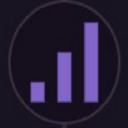-
 bitcoin
bitcoin $111145.080499 USD
0.75% -
 ethereum
ethereum $3928.989005 USD
1.66% -
 tether
tether $1.000226 USD
-0.02% -
 bnb
bnb $1108.209329 USD
-2.26% -
 xrp
xrp $2.545944 USD
6.36% -
 solana
solana $193.960655 USD
0.72% -
 usd-coin
usd-coin $1.000128 USD
0.02% -
 dogecoin
dogecoin $0.199304 USD
2.23% -
 tron
tron $0.297908 USD
-4.88% -
 cardano
cardano $0.656962 USD
2.13% -
 hyperliquid
hyperliquid $39.225782 USD
-1.92% -
 chainlink
chainlink $17.897108 USD
2.99% -
 ethena-usde
ethena-usde $0.999354 USD
-0.02% -
 stellar
stellar $0.321154 USD
3.36% -
 bitcoin-cash
bitcoin-cash $505.299839 USD
5.10%
How to read the order book for SOL contracts effectively?
A thick SOL order book signals high liquidity, reducing slippage and enabling smoother trades, especially for large orders in perpetual contracts.
Oct 23, 2025 at 08:48 am
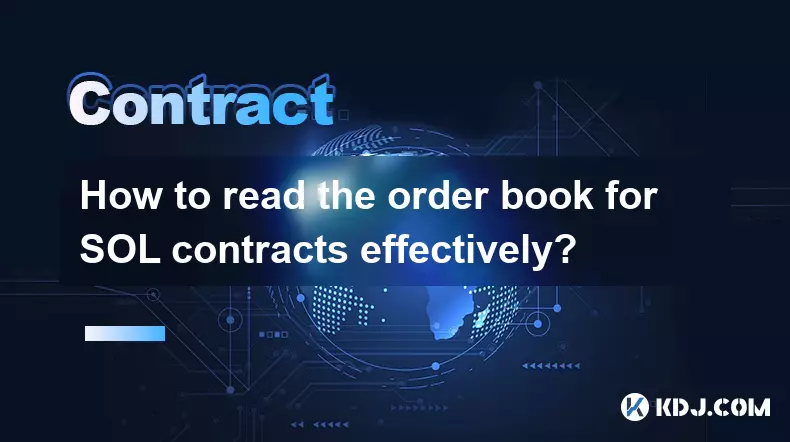
Understanding the Structure of the SOL Order Book
1. The order book for SOL contracts displays a real-time list of buy and sell orders at various price levels. This depth chart is essential for traders aiming to assess market sentiment and liquidity. Bid prices, representing buyers, appear on the left or top side, while ask prices, reflecting sellers, are shown on the right or bottom.
2. Each level in the order book indicates the price and the corresponding volume available. Large clusters of buy orders suggest strong support, whereas dense sell walls may indicate resistance zones. Traders monitor these concentrations to anticipate potential price reversals or breakouts.
3. The spread between the highest bid and the lowest ask reveals market tightness. A narrow spread typically signifies high liquidity and active trading, which is common in major derivatives markets like those on centralized exchanges such as Bybit or OKX.
4. Price levels with significantly large orders—often called 'icebergs'—can influence short-term movement. When such orders are filled or canceled, it often triggers rapid price reactions due to shifts in supply-demand equilibrium.
Interpreting Market Depth and Liquidity Signals
1. Market depth refers to how much volume can be traded without causing drastic price changes. A deep order book for SOL perpetuals means substantial buy and sell interest across multiple price points, reducing slippage during execution.
2. Sudden thinning of the order book, especially near key psychological levels like $150 or $200, may signal an impending volatility spike. Low depth increases susceptibility to whale trades or spoofing attempts where large fake orders manipulate perception.
3. Traders should pay attention to asymmetric depth—when one side of the book (buy or sell) dominates substantially—as it often precedes directional moves. For example, a wall of sell orders vanishing quickly could indicate absorption by large players preparing for upward momentum.
4. Real-time order flow analysis complements depth reading. Watching how fast new orders replace canceled ones helps distinguish genuine interest from noise. Persistent replenishment behind large bids suggests institutional accumulation.
Using Time & Sales Data Alongside the Order Book
1. The time and sales window shows executed trades, including price, size, and timestamp. When combined with the order book, it allows traders to see whether fills occur at the bid, ask, or midpoint—indicating aggressive buying or passive lifting.
2. Repeated taker buys above the mid-price, especially matching visible ask quantities, confirm bullish pressure. Conversely, consistent taker sells hitting bids reflect distribution or bearish control.
3. Large trade executions that do not move the price significantly suggest hidden liquidity absorption, often seen when smart money enters positions gradually without triggering stop runs.
4. Discrepancies between visible order book data and actual trade flow can expose spoofing. If a massive sell wall disappears moments before a surge, it’s likely a manipulative tactic rather than true selling intent.
Spotting Imbalance and Anticipating Moves
1. Order book imbalance occurs when buy volume far exceeds sell volume, or vice versa, within a narrow price range. This asymmetry often precedes acceleration in the direction of the dominant side.
2. Algorithms used by high-frequency traders detect these imbalances and react within milliseconds. Retail traders can leverage this by setting conditional orders near imbalance zones to capture early momentum.
3. A shrinking bid stack while price holds steady may indicate quiet accumulation; sellers are being picked off incrementally, tightening supply before a breakout.
4. During low-volume periods, false imbalances may form. It’s critical to cross-verify with volume profile and open interest trends on SOL futures to confirm legitimacy.
Frequently Asked Questions
What does a thick order book mean for SOL contracts?A thick order book indicates high liquidity with numerous orders stacked across price levels. This reduces slippage and enables smoother entry and exit, particularly beneficial for large-size traders operating in SOL perpetual markets.
How can I tell if an order book is being manipulated?Signs include rapidly appearing and disappearing large orders (spoofing), lack of trade execution despite deep visible orders, or sudden vacuum zones where price gaps through levels with no apparent fills. Monitoring time-and-sales data helps verify authenticity.
Why does the SOL order book change so quickly?High-frequency trading bots and algorithmic strategies constantly update orders based on micro-market signals. In fast-moving crypto derivatives markets, even minor news or BTC correlation shifts can trigger cascading order adjustments across SOL contract books.
Can I rely solely on the order book for trading decisions?No single tool provides complete insight. While the order book offers valuable real-time structure, it must be combined with volume analysis, funding rates, and macro-level chain data for robust decision-making in volatile SOL contract environments.
Disclaimer:info@kdj.com
The information provided is not trading advice. kdj.com does not assume any responsibility for any investments made based on the information provided in this article. Cryptocurrencies are highly volatile and it is highly recommended that you invest with caution after thorough research!
If you believe that the content used on this website infringes your copyright, please contact us immediately (info@kdj.com) and we will delete it promptly.
- Essex Post Office, 5p Coins, and King Charles: A Royal Mint Revelation!
- 2025-10-23 10:30:16
- Waymo's Newark Airport AV Tests: Alphabet's AI Gamble Pays Off?
- 2025-10-23 10:30:16
- King Charles 5p Coins: A Royal Flush in Your Pocket?
- 2025-10-23 10:35:18
- Solana, Crypto Advisory, and Forward Industries: A New York Minute on the Future of Finance
- 2025-10-23 08:51:22
- MAGACOIN: Ethereum Whales Dive into the Hottest Presale of 2025
- 2025-10-23 08:51:22
- Kadena's End of the Road? KDA Token Plummets Amid Project Abandonment
- 2025-10-23 08:55:34
Related knowledge
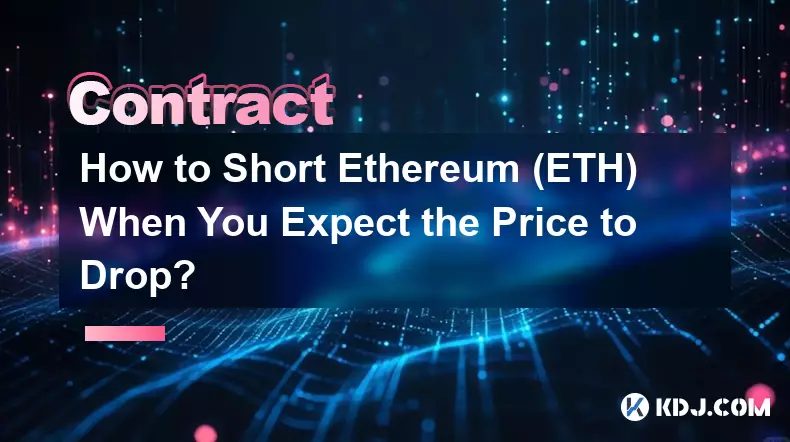
How to Short Ethereum (ETH) When You Expect the Price to Drop?
Oct 25,2025 at 05:18pm
Understanding Short Selling in the Cryptocurrency Market1. Short selling Ethereum means borrowing ETH and selling it at the current market price with ...

What are quarterly vs. perpetual ADA contracts?
Oct 19,2025 at 08:55am
Understanding Quarterly and Perpetual ADA ContractsDerivatives trading in the cryptocurrency space has expanded rapidly, offering traders various inst...
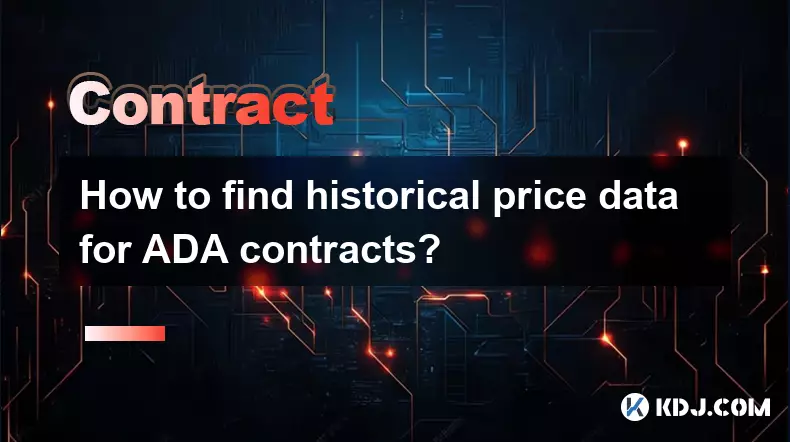
How to find historical price data for ADA contracts?
Oct 18,2025 at 10:18pm
Understanding ADA and Its Market Data Availability1. Cardano’s native cryptocurrency, ADA, operates on a decentralized blockchain that supports smart ...
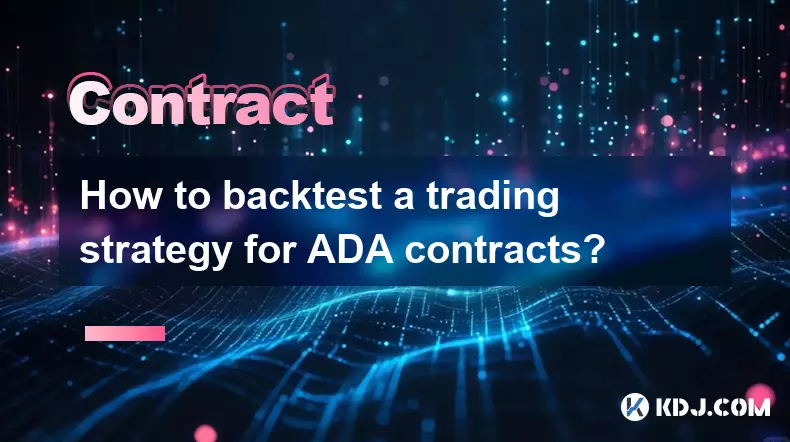
How to backtest a trading strategy for ADA contracts?
Oct 21,2025 at 02:37pm
Understanding the Basics of Backtesting ADA Contracts1. Backtesting a trading strategy for Cardano (ADA) contracts involves applying historical price ...

How to read the order book for ADA contracts effectively?
Oct 22,2025 at 06:37am
Understanding the Structure of the ADA Order Book1. The order book for ADA contracts displays a real-time list of buy and sell orders organized by pri...
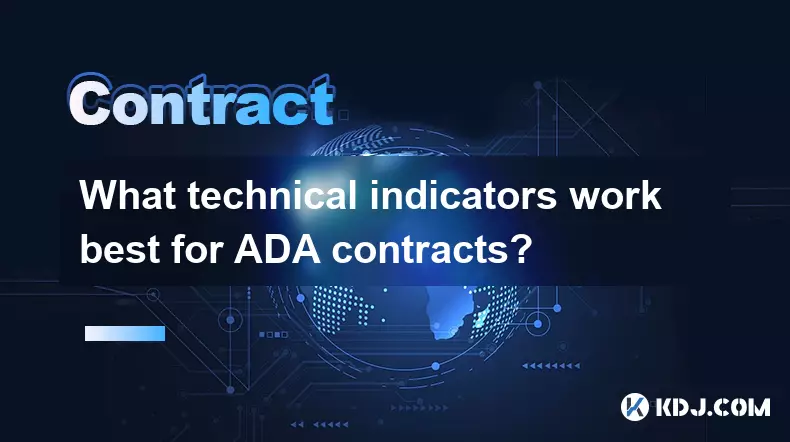
What technical indicators work best for ADA contracts?
Oct 23,2025 at 06:36pm
Understanding the Role of Technical Indicators in ADA TradingTechnical indicators are essential tools for traders analyzing Cardano (ADA) contracts. T...

How to Short Ethereum (ETH) When You Expect the Price to Drop?
Oct 25,2025 at 05:18pm
Understanding Short Selling in the Cryptocurrency Market1. Short selling Ethereum means borrowing ETH and selling it at the current market price with ...

What are quarterly vs. perpetual ADA contracts?
Oct 19,2025 at 08:55am
Understanding Quarterly and Perpetual ADA ContractsDerivatives trading in the cryptocurrency space has expanded rapidly, offering traders various inst...

How to find historical price data for ADA contracts?
Oct 18,2025 at 10:18pm
Understanding ADA and Its Market Data Availability1. Cardano’s native cryptocurrency, ADA, operates on a decentralized blockchain that supports smart ...

How to backtest a trading strategy for ADA contracts?
Oct 21,2025 at 02:37pm
Understanding the Basics of Backtesting ADA Contracts1. Backtesting a trading strategy for Cardano (ADA) contracts involves applying historical price ...

How to read the order book for ADA contracts effectively?
Oct 22,2025 at 06:37am
Understanding the Structure of the ADA Order Book1. The order book for ADA contracts displays a real-time list of buy and sell orders organized by pri...

What technical indicators work best for ADA contracts?
Oct 23,2025 at 06:36pm
Understanding the Role of Technical Indicators in ADA TradingTechnical indicators are essential tools for traders analyzing Cardano (ADA) contracts. T...
See all articles








































































